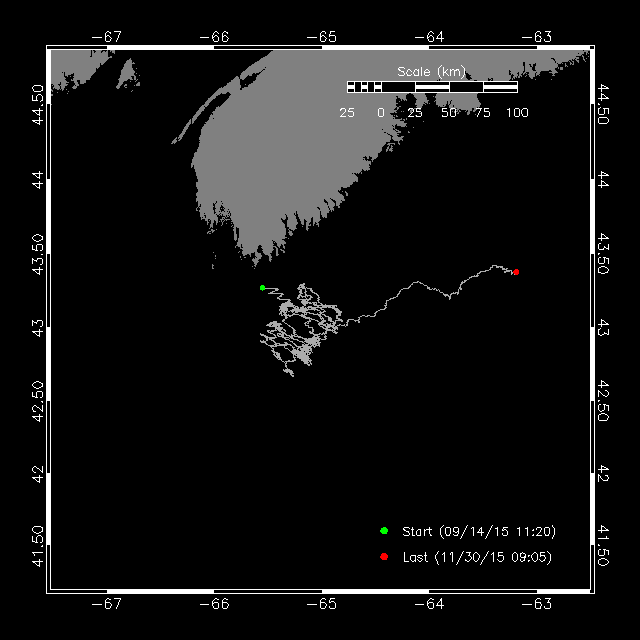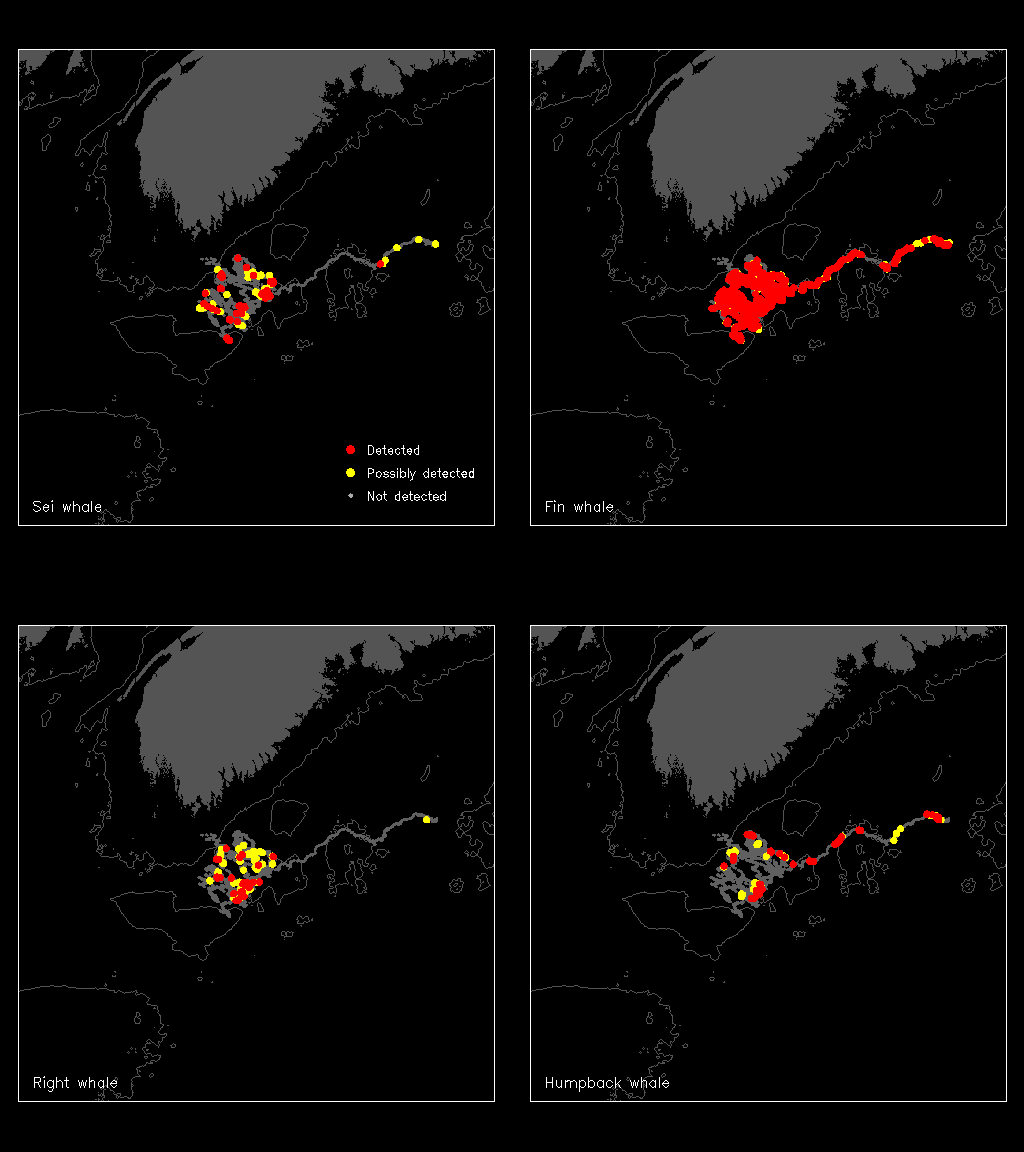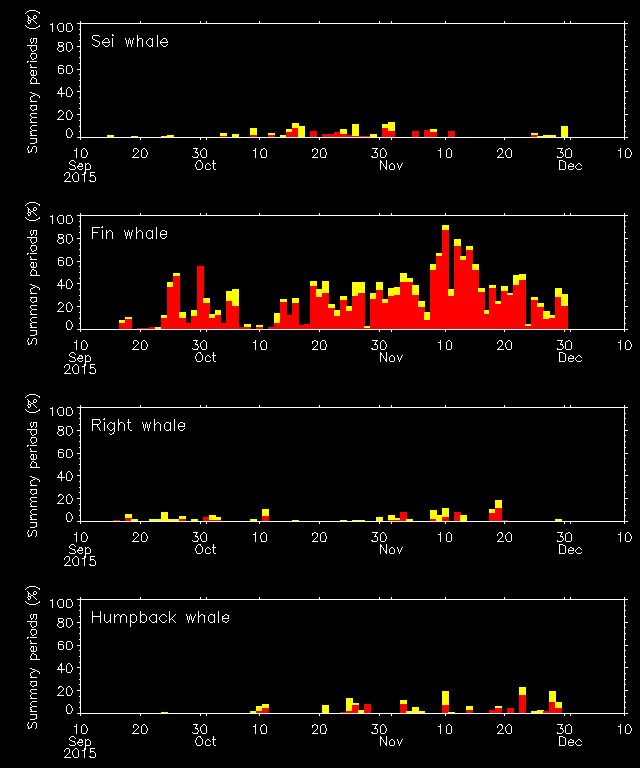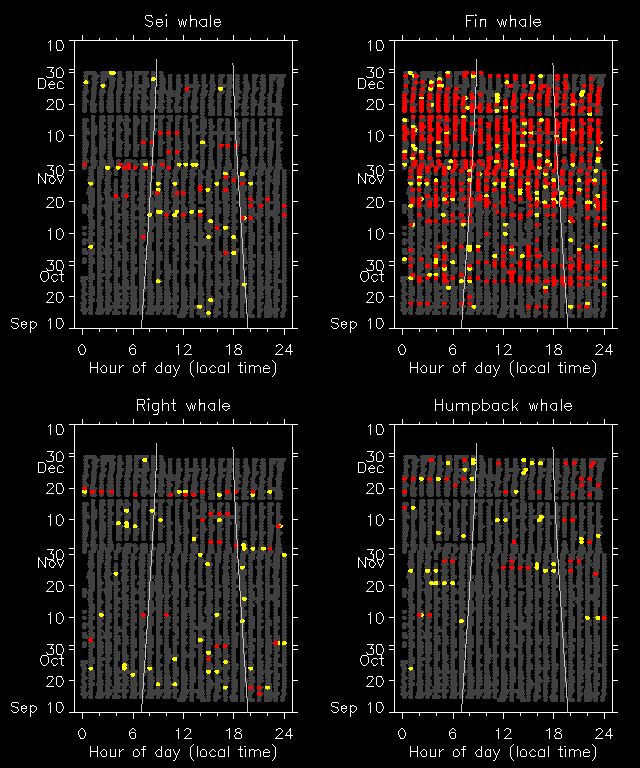Autonomous Real-time Marine Mammal Detections
Woods Hole Oceanographic Institution
Roseway Basin, Southwestern Scotian Shelf, Canada, Summer 2015
Study objectives
A Slocum glider was deployed in Roseway Basin on the southwestern Scotian Shelf to locate and study the highly endangered North Atlantic right whale in advance of a survey cruise to the region. The objectives of the cruise are to photo identify and biopsy right whales. A Dalhousie glider is being used as a reconnaissance tool to improve the efficiency of locating and studying whales, allowing researchers to spend less time searching for the whales and more time studying them.
Principal Investigators: Kim Davies, Chris Taggart, Richard Davis (Dalhousie University), Moira Brown (New England Aquarium), and Mark Baumgartner (WHOI)
Platform dal556
Platform location:

Daily analyst review:
| | Detected |
| Possibly detected |
| Not detected |
Analyst-reviewed species occurrence maps:

Analyst-reviewed time series:

Analyst-reviewed diel plot:

Links to detailed information for platform dal556:
Automated detection data
DMON/LFDCS diagnostics
Platform diagnostics
Questions
Please email Mark Baumgartner at mbaumgartner@whoi.edu. For a general desciption of the detection system and the autonomous platforms, visit dcs.whoi.edu.
Acknowledgements
The Dalhousie glider was expertly prepared by Adam Comeau, Hansen Johnson, Kim Davies, and Richard Davis (Dalhousie University). Support for the deployment and operation of the gliders was provided by the Canadian Habitat Stewardship Program for Species at Risk and the Marine Environmental Observation Prediction and Response Network (MEOPAR) Whales, Habitat and Listening Experiment (WHaLE). Support for the development, integration, and testing of the glider DMON/LFDCS was provided by the Office of Naval Research and the NOAA National Marine Fisheries Service Advanced Sampling Technologies Working Group in collaboration with the Northeast Fisheries Science Center's Passive Acoustics Research Group (leader: Sofie Van Parijs).
Home



